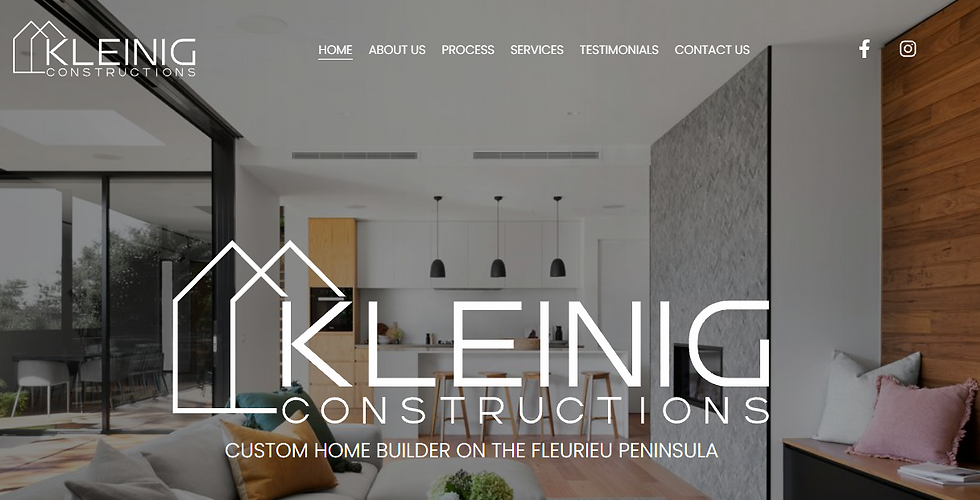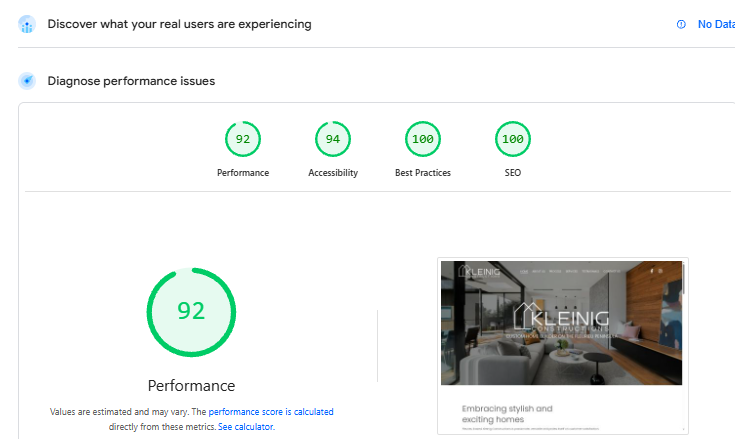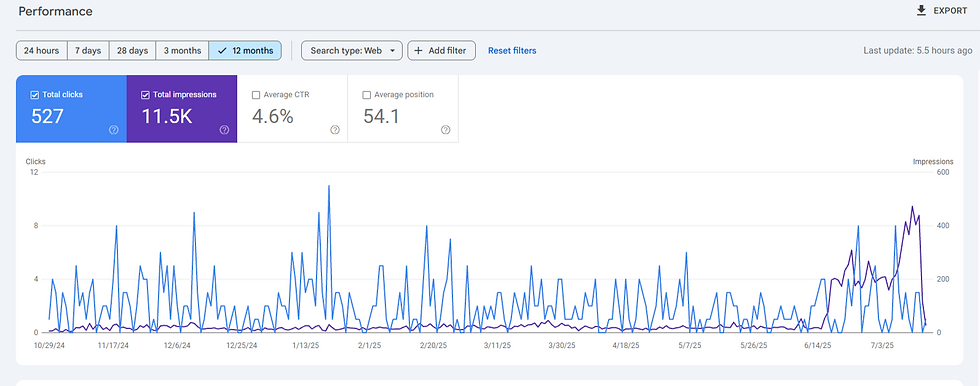SEO Strategy for Kleinig Constructions
- Keito Panaglima
- Aug 19
- 3 min read
Updated: Aug 21
Client: Kleinig Constructions
Industry: Construction
Platform: WordPress
Location: Australia
Project Timeline: October 2024 – August 2025
Background
Kleinig Constructions is a startup construction business based in Australia. When I first began working with them in October 2024, their website had no SEO presence, and they were not utilizing any SEO strategies. The business was in its early stages, and the website was simple, with minimal content, aligning with the client’s preference for a straightforward and clean design. My initial role was as a WordPress Manager, but after evaluating their website and SEO needs, I suggested taking on the SEO work as well. This provided me with the perfect opportunity to refine my SEO skills and help the company improve its online visibility.
The Challenge
Kleinig Constructions’ website was effectively a blank slate in terms of SEO. There was no existing content strategy, and the client had no desire to add any new content like blogs or articles, which made the SEO strategy more challenging. Typically, content is a major factor for ranking, but with limited options to work with, I needed to get creative with my approach.

Strategy & Execution
Technical SEO Audit: The first step was to conduct a thorough technical audit using tools like Screaming Frog to assess the website’s performance and structure. I identified areas for improvement, including page load speed, indexing issues, and technical errors.

Website Indexing & Sitemap Submission: I submitted the website’s sitemap to Google Search Console and ensured that all pages were properly indexed. This was crucial for ensuring that Google could crawl and rank the website efficiently.

Competitor Analysis: I performed a detailed competitor analysis to understand what other construction businesses in the area were doing for SEO. This helped me identify keyword opportunities and potential gaps in their online presence that Kleinig Constructions could capitalize on.
Keyword Research: Without access to paid SEO tools, I conducted in-depth keyword research using free tools and manual strategies to uncover high-value keywords specific to the construction industry in their service areas. These keywords became the foundation of our SEO strategy.
On-Page Optimization: I focused heavily on on-page SEO, ensuring that each page was optimized for target keywords. I also worked on improving the website’s UI/UX to make it user-friendly, intuitive, and easy to navigate. This included optimizing the mobile experience and improving the overall site structure for better user engagement.
Local SEO & Citations: As the client’s primary goal was local visibility, I focused on building local citations and optimizing the site for location-based searches. I worked on improving the website's NAP (Name, Address, Phone Number) consistency across online directories and other local platforms.
Adapting to Client Preferences
One of the main hurdles I faced was the client’s preference for a simple website without blogs or additional content. Typically, content is crucial for SEO, as it helps target more keywords and attracts organic traffic. I explained the limitations of this approach, but worked within these constraints by improving the website’s technical performance and leveraging local SEO.
From March to August 2025, I focused on optimizing the existing website elements. This included:
Speed Performance: I made several improvements to the website's loading times and page performance.
Core Web Vitals: I ensured that the site met Google's Core Web Vitals, enhancing the user experience and boosting its search engine rankings.
Local SEO: I continued to build free citations and improve the company’s presence in local directories and maps.
Results
By the end of the project in August 2025, Kleinig Constructions’ website saw notable improvements:
Local Traffic Growth: Even with minimal content, the website began attracting organic traffic, especially from targeted local areas.

Improved Rankings: Many of the targeted keywords for their service areas began ranking higher in search engine results pages (SERPs).
Improved User Experience: User engagement improved due to the enhanced website speed and better UI/UX.

SEO Results




























Comments